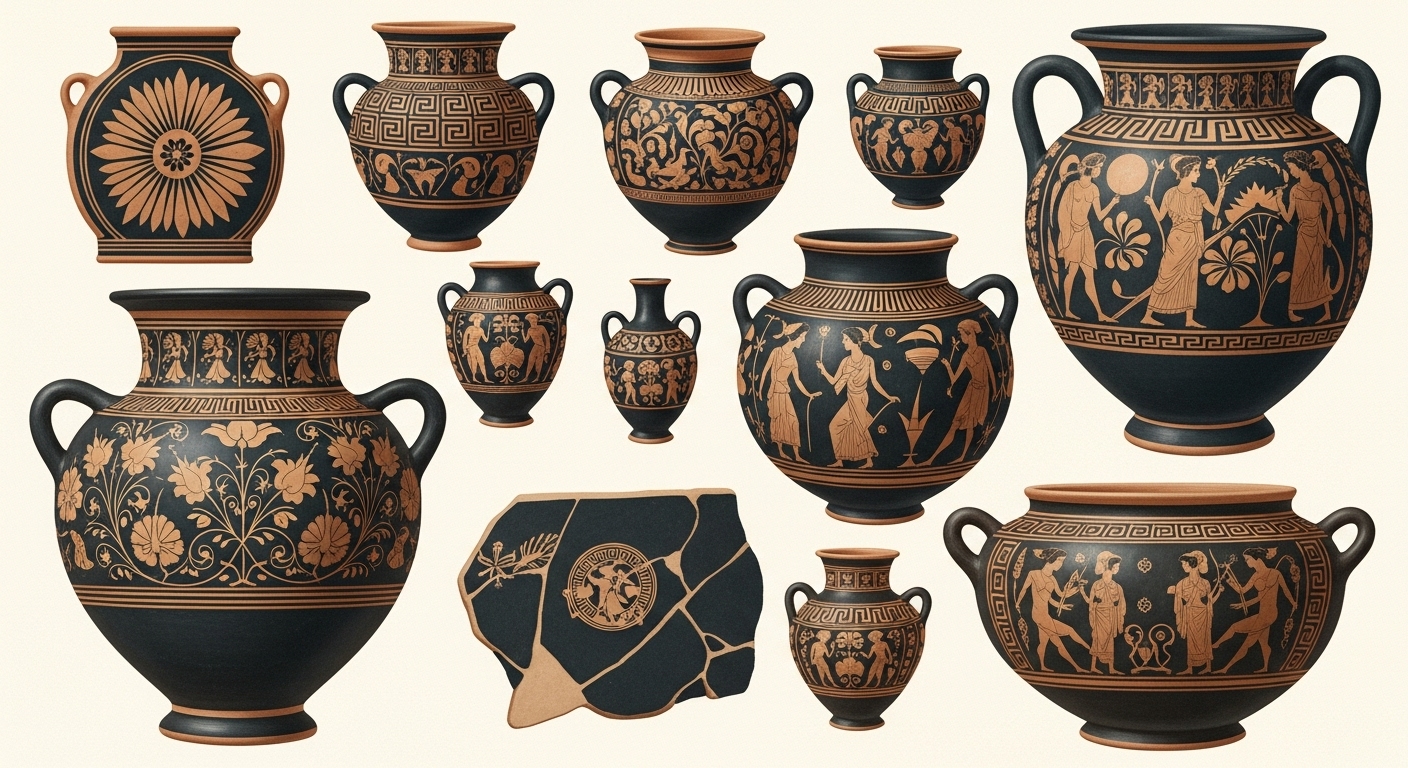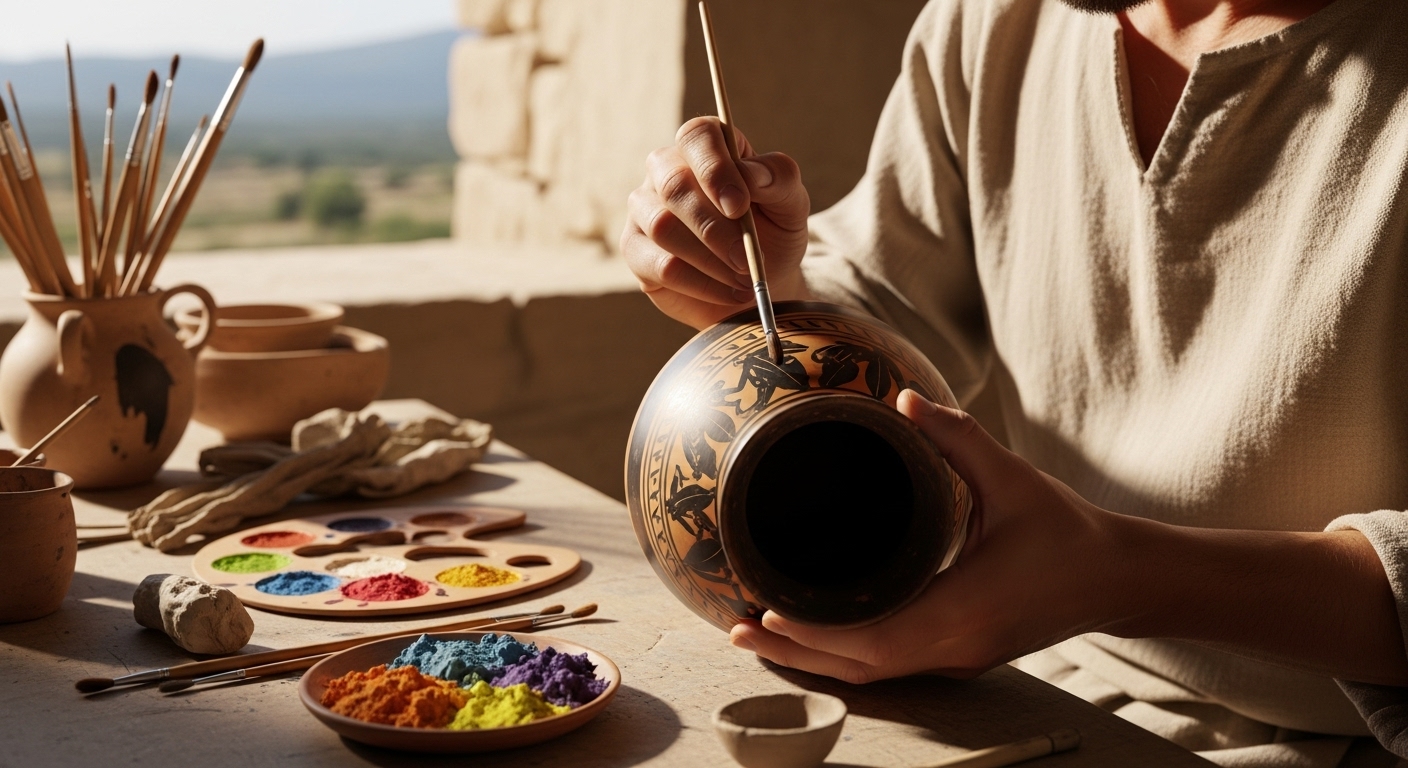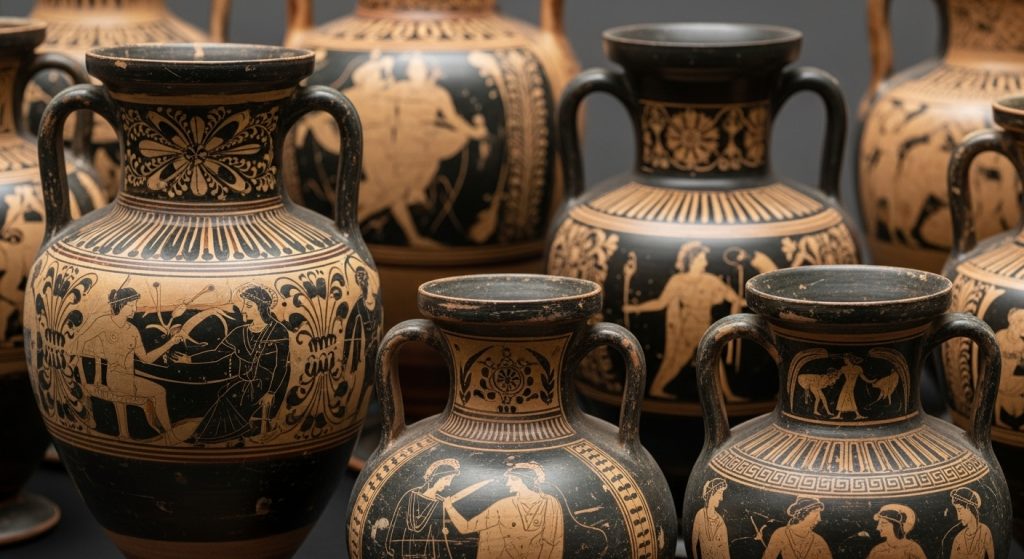The world of old Greek pottery offers a captivating window into the artistic soul of ancient civilizations. More than just functional vessels, these ceramics tell stories of daily life, mythology, and cultural identity. From intricate Greek pottery designs to detailed paintings and craftsmanship, ancient Greek and Roman ceramics have left a legacy that continues to inspire artists and historians today.
The Evolution of Greek Pottery Designs
Greek pottery designs evolved significantly over time, reflecting changes in technology, aesthetics, and cultural values. Early designs were geometric and abstract, often featuring patterns like meanders, spirals, and zigzags. As time passed, potters began incorporating more lifelike human figures and mythological scenes.

- Geometric Period (900–700 BCE): Characterized by angular shapes, repeating motifs, and stylized animals.
- Orientalizing Period (700–600 BCE): Influenced by Near Eastern art, introducing floral and animal imagery.
- Classical Period (480–323 BCE): Known for detailed human forms, balance, and naturalism.
Each period added new layers of expression, making old Greek pottery not only beautiful but historically rich.
Ancient Greece Pottery Designs and Their Symbolism
When studying ancient Greece pottery designs, it’s clear that each piece carried meaning beyond its appearance. Gods, heroes, and daily scenes were commonly painted to serve symbolic, religious, or even political purposes.

- Mythological Narratives: Stories of Heracles, Achilles, and other legendary figures were common.
- Everyday Life Scenes: Depictions of weddings, music, warfare, and athletics helped preserve cultural customs.
- Sacred Imagery: Some designs were used in rituals and reflected divine beliefs.
These designs also acted as a form of non-verbal communication, helping archaeologists better understand ancient values and worldviews.
Ancient Greek Pottery Painting Techniques
One of the most admired aspects of ancient Greek pottery painting is the craftsmanship involved. Artists developed unique techniques to create visual contrast and depth:

- Black-Figure Technique: Artists painted figures in black slip on red clay and carved fine details with sharp tools.
- Red-Figure Technique: The background was filled in, leaving the figures in the natural red color of the clay, allowing for more detailed painting.
- White-Ground Technique: Used for special or funerary pottery, it featured figures painted on a white surface with colorful pigments.
These techniques made ancient Greek pottery painting a sophisticated art form that rivaled sculpture and architecture.
Influence of Ancient Roman Ceramics
As Greek pottery spread across the Mediterranean, it deeply influenced ancient Roman ceramics. While Romans developed their own styles and materials, they borrowed heavily from Greek forms and iconography.

- Roman adaptation of Greek shapes: Amphorae, kraters, and kylixes were recreated in Roman contexts.
- Mass production: Romans introduced molds and mass-production techniques, spreading ceramic art more widely.
- Functional and decorative use: Roman pottery was both utilitarian and highly decorative, often found in villas and public baths.
The legacy of old Greek pottery lived on through Roman adaptations, blending function with artistry in new ways.


